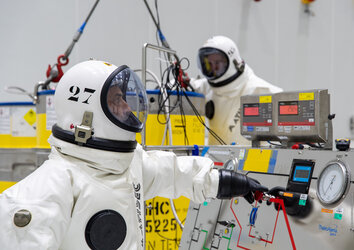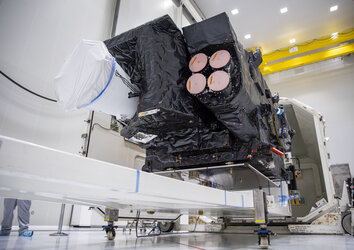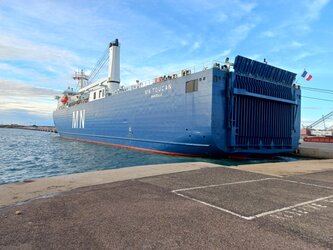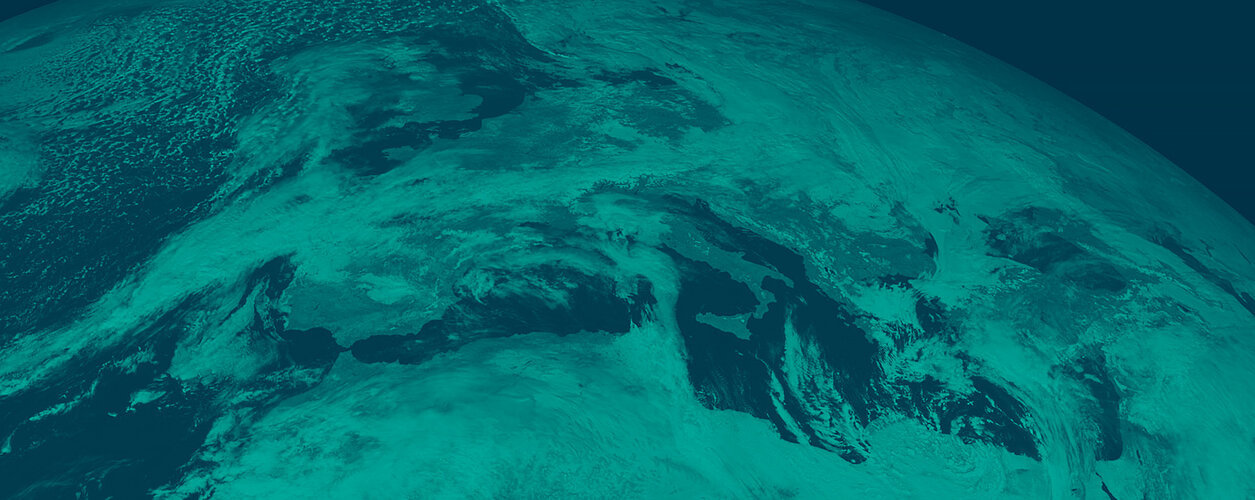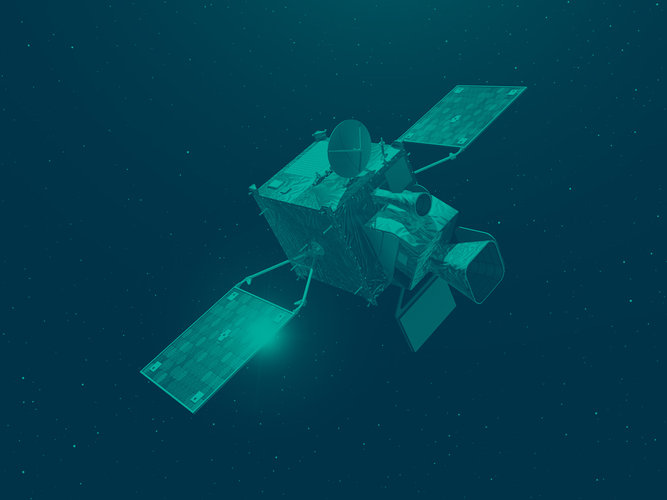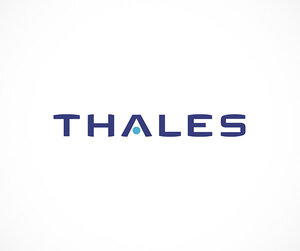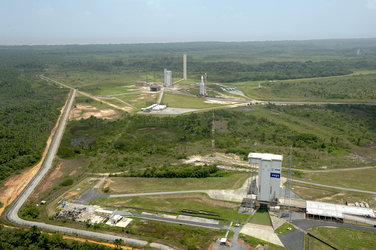MTG-I1 never to be seen again
As preparations to launch Europe’s first Meteosat Third Generation Imager satellite continue, the team at Europe’s Spaceport in Kourou, French Guiana, has bid farewell to their precious satellite as it was sealed from view within the Ariane 5 rocket’s fairing. This all-new weather satellite is set to take to the skies on 13 December.
Since its arrival at the spaceport in mid-October, MTG-I1 has been undergoing all that it takes to get it ready for liftoff. This includes a huge number of careful checks to ensure all its components are in good working order, the hazardous task of loading the satellite with two tonnes of highly volatile fuel and hoisting it on to the top part of the rocket.
In parallel the co-passenger, Intelsat Galaxy 35 and 36 were being mounted onto the Sylda structure and the fairing mounted, encapsulating the two satellites. This whole assembly was then hoisted almost 80 metres into the air and lowered very carefully over the MTG-I1 satellite to complete the launcher integration.
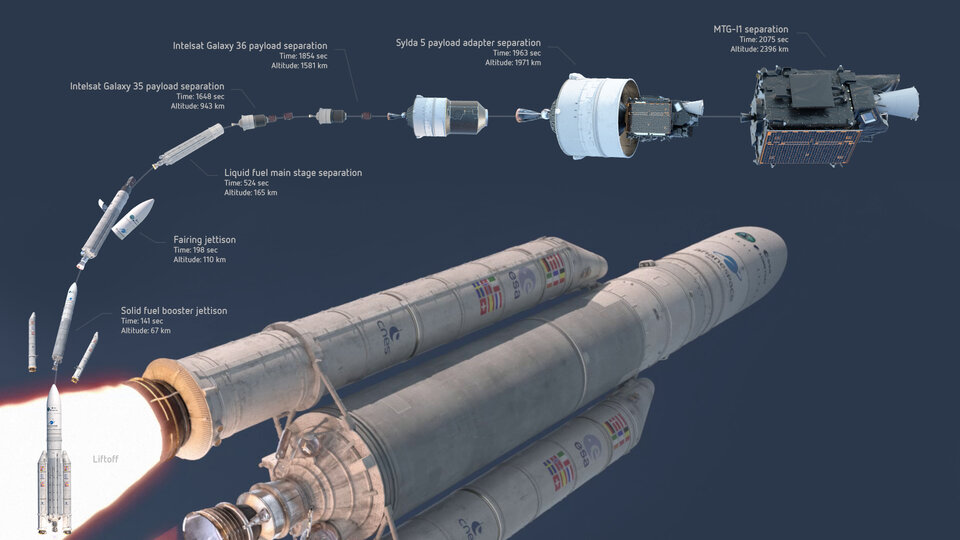
The fairing, which protects the payload satellites during the first stages of the launch, will be jettisoned a little over three minutes after liftoff when the rocket is about 110 km above the surface of Earth when the effects of the atmosphere are negligible.
At around 30 minutes after launch, the Galaxy satellites will be released to start their journey to geostationary orbit. Around five minutes after this the Sylda will be jettisoned, exposing MTG-I1. Finally, the clamp band holding the satellite will be released and MTG-I1 set free to fulfil its crucial mission.
ESA’s Meteosat Programme Manager, Paul Blythe, said, “It was a very emotional moment. We’ve spent more than 12 years developing and building the satellite so saying farewell is a significant milestone as it will never been ‘seen’ again by human eyes. Of course, our real good-byes will come next week when we see the rocket lift off.
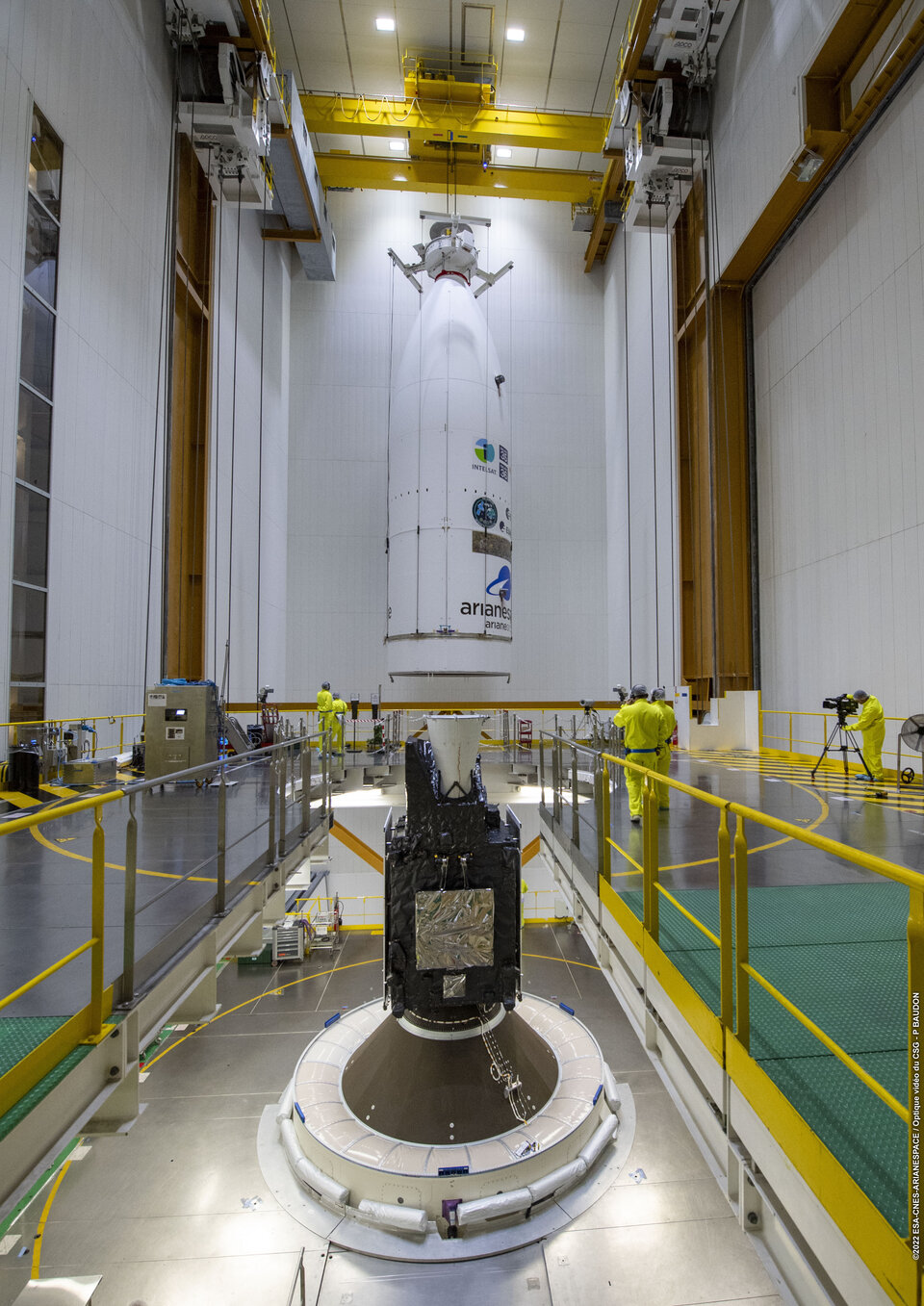
“The launch campaign has gone really well and that’s thanks to the close cooperation between the various teams all working hard to get the job done.
“Now that MTG-I1 is safely tucked up in the fairing, the next step is the launch dress rehearsal where we will practise the countdown, including the actual switch-on sequence of the satellite which takes around three hours. Then the launch readiness review will be held with Arianespace on Saturday, which should clear us for launch.
“The rollout of the Ariane 5 rocket to the launch pad, with our precious cargo, will take place on Monday, the day before the launch.”
MTG-I1 is the first of six satellites that form the full MTG system, which will provide critical data for weather forecasting over the next 20 years. In full operations, the mission will comprise two MTG-I satellites and one MTG Sounding (MTG-S) satellites working in tandem.
The MTG-I satellites carry two completely new instruments, a Flexible Combined Imager and Europe’s first Lightning Imager, to deliver high-quality data for better weather forecasting.

The Flexible Combined Imager has more spectral channels and is capable of imaging in higher resolution compared to current Meteosat Second Generation’s Spinning Enhanced Visible and Infrared instrument.
The Lightning Imager offers a completely new capability for European meteorological satellites. It will continuously monitor more than 80% of the Earth disc for lightning discharges, taking place either between clouds or between clouds and the ground.
These all-new instruments will allow severe storms to be detected in their early stages and will therefore be key for issuing timely warnings.
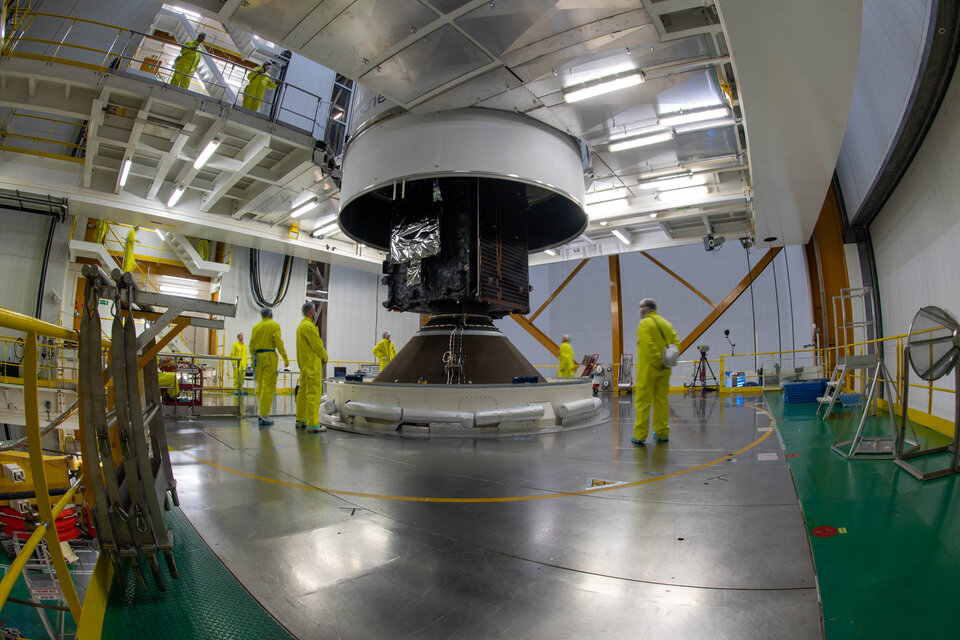
The MTG-I satellites also carry two smaller payloads for data collection from remote science beacons and for search and rescue by detecting emergency beacons.
The MTG mission is a cooperation between Eumetsat and ESA. ESA is responsible developing and procuring the six MTG satellites. Eumetsat defines the system requirements, develops the ground systems, procures the launch services, operates the satellites, and makes the data available to users. Thales Alenia Space is the prime contractor for overall MTG programme and the MTG-I satellites.



